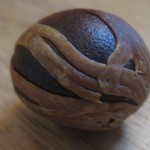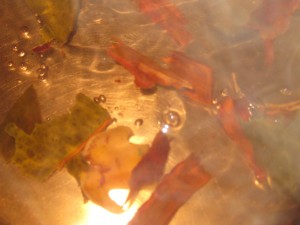“People think cinnamon, it is like a little twig, but this is not true. Do you know?”
“Sure,” I said, because I was pretty sure I knew what cinnamon looked like.
“No, you do not know,” Veronica said, sighing heavily, because she was pretty sure I didn’t.
As it turned out, she was right, but let’s back up a step or two. Veronica is one of my students at the Bedford Learning Center, a doggedly determined woman who is a few decades older than me and likes to pepper our conversations with bits of wisdom, usually about the differences between men and women. But that evening, she had turned away from gender problems in favor of the flora of her homeland, St. Lucia. A friend visiting from the island had just brought her a new supply of herbal tea-fixings, including the bark of the native cinnamon tree.
“You will see,” she said, and I did, because at our next meeting, she brought me a big Ziploc bag of leaves and nuts and the bark of what looked like a very large tree. In fact, it looked like someone had hacked off a chunk of a sizable oak tree or something and dyed it a more reddish color. It definitely did not look like what passes for cinnamon at any grocery store in America. Some subsequent Internet research revealed that Veronica knew what she was talking about: what most people call cinnamon is actually from a shrub called a cassia plant. But Veronica was talking about the cinnamon tree or Cinnamomum verum (literally “true cinnamon”), which is from the same family as cassia. So now I know.
 The mysterious nuts were actually not from the cinnamon tree but were nutmeg that had not yet been hulled. If I ever figure out how to crack them, I’m sure the nutmeg will be very tasty. But even before then, Veronica told me I could peel the beige veins from the outside and use those to make tea, too.
The mysterious nuts were actually not from the cinnamon tree but were nutmeg that had not yet been hulled. If I ever figure out how to crack them, I’m sure the nutmeg will be very tasty. But even before then, Veronica told me I could peel the beige veins from the outside and use those to make tea, too.
According to Veronica, making a tea from the cinnamon bark and leaves has all kinds of medicinal qualities, like lowering your blood pressure and strengthening your heart. “If you boil it until the tea turns red, it is good for your blood,” she told me—an idea that I secretly dismissed. But after drinking the tea for three mornings, I have to say that I feel pretty good—more energetic while having imbibed less caffeine. So what the hell do I know? Maybe it is good for my blood. I’ve doubted Veronica’s wisdom enough already for one post, so for now, I’m just going to lean back and sip on this bark

